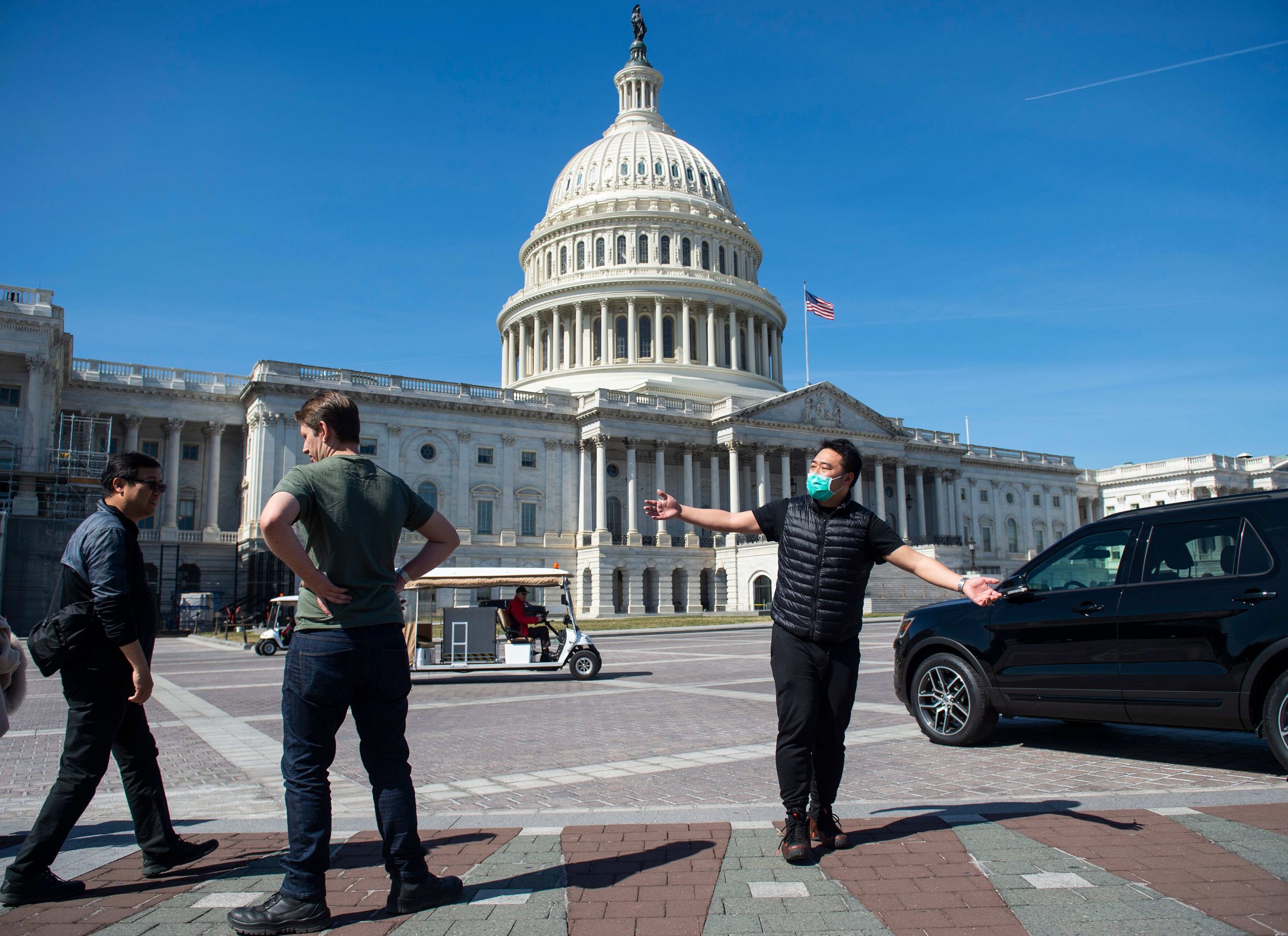Capitol Hill signs ask for more PPE masks for healthcare workers in Washington, D. C. on April 17, 2020.
Ashley Stringer | CNBC
The Congressional Budget Office released its own bleak outlook Tuesday for economic growth, unemployment and the federal budget, predicting job gains later this year but an overall climate that will remain subdued through 2021.
In its latest projections, the CBO sees GDP capsizing 38% on an annualized basis in the second quarter with the 26 million more unemployed Americans than there were at the end of 2019.
The forecasts are roughly in line with Wall Street economists and slightly less dour than the most recent tracking number from the Atlanta Federal Reserve, which sees GDP falling about 42% in the April-to-June period.
If the collective outlook is anything close to accurate, it will represent the worst drop for a U.S. economy that was brought to a halt due to efforts to stem the coronavirus pandemic.
“The economy is expected to begin recovering during the second half of 2020 as concerns about the pandemic diminish and as state and local governments ease restrictions,” the CBO said in a narrative that accompanied its projections.
Job growth will improve “materially” in the third quarter as social distancing policies associated with the virus diminish somewhat. However, the CBO said, “persistence of social distancing will keep economic activity and labor market conditions suppressed for some time.”
The office also cautioned that, “The decline in economic activity has been so rapid and so recent that the depth of the downturn is still uncertain, and the data on spending are preliminary and incomplete.”
Congress has reacted to the pandemic with one rescue bill that totaled close to $3 trillion and another that could be as much or more.
Looking at just the money approved so far, the CBO said it would increase the federal deficit by $2.1 trillion in fiscal 2020 and $600 billion in 2021.
The levels equate to about 11% of nominal GDP in fiscal 2020 and 3% in 2021.


 Signal2forex.com - Best robots Forex sy famantarana
Signal2forex.com - Best robots Forex sy famantarana




